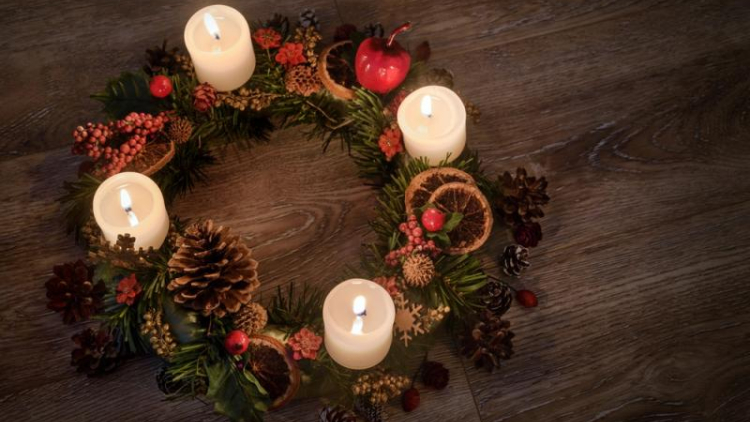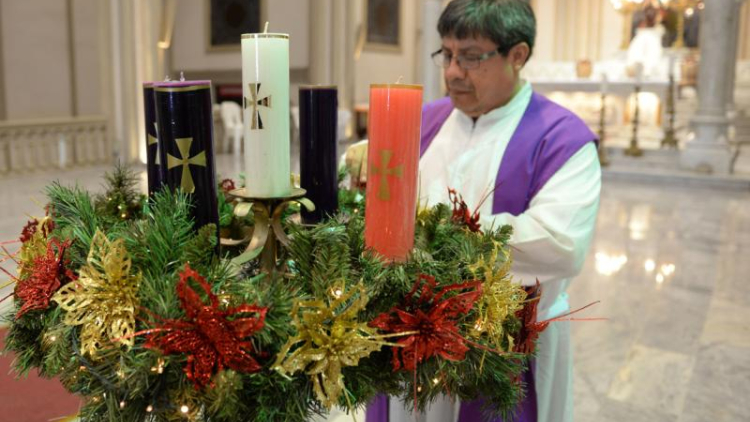CHRISTIANITY | What is Advent?
Advent is the first part of the Christian liturgical year, and is a time of spiritual preparation for the celebration of the birth of Jesus. It usually lasts between 22 and 28 days, as it has to include each of the four Sundays leading up to Christmas Day (the liturgical celebration of Christmas). However, for the Orthodox church, the Advent season is 40 days long, from 28 November to 6 January (the Orthodox church, in accordance with the Julian calendar, celebrates Christmas on 7 January). Advent (in Latin, adventus Redemptoris, meaning “Coming of the Redeemer”, marks the start of the liturgical year in almost all Christian denominations. During this time people start to prepare spiritually to celebrate the birth of Jesus Christ and to renew hope in the second coming of Jesus Christ, at the end of time.
People who follow the Christian faith consider Advent to be a time of prayer and reflection characterised by vigilant hope (that is, a time of hope and vigil), of penance, forgiveness and joy. In the Orthodox Church, Advent also includes strict abstinence from certain food products, which becomes a strict fast (known as the Nativity fast) in the Coptic Orthodox Church.
With their own particular liturgical practices, almost all Christian churches have historically celebrated this period: the Apostolic Roman Catholic Church, the Apostolic Catholic Orthodox Church, the Anglican Church, the protestant churches (Lutheran, Presbyterian, Methodist etc.), the Coptic Orthodox Church, among others.
THE ADVENT WREATH
During Advent, wreaths made from pine or fir branches are placed in a prominent location in churches or people’s homes. These are known as Advent Wreaths or Advent Crowns and they have four candles, one for each Sunday of Advent. There is one little Advent tradition: each of these four candles is assigned a virtue which has to improve during that week, for example, the first one, love; the second one, peace, the third one, tolerance and the fourth one, faith. The four candles symbolise the four Sundays of Advent. Three of the candles are purple, a colour symbolising that this is a time of penance. One of the candles, however, has a paler, rose colour: it represents the third Sunday of Advent, known as Gaudete Sunday, or Joy Sunday. Even though it takes place during the season of penance, Gaudete Sunday serves as a time of respite from the austere practices, when people rejoice at the nearness of Jesus’ return.
The advent wreath has its origins in a European pagan tradition which consisted of lighting candles in winter with a flame from the sun god’s candle so that he would return with his light and warmth during the winter months. The first missionaries used this tradition as a tool for spreading the gospel. They used their traditions as a means of teaching them about the Catholic faith.
It is a custom that was popularised in Germany after the First World War, and which later spread to other Western European countries. On Advent Sundays, families or the community come together around the advent wreath. Afterwards they read passages from the bible and say some prayers. The wreath can be taken to the church to be blessed by the priest.
The wreath is formed of a number of symbols:
- Its circular shape: The circle has no beginning and no end. This symbolises the everlasting love of God, who is eternal, without beginning and without end; and also our love of God and our neighbour, that it shall never end.
- The green branches: Green is the colour of hope and life. God wants people to await His blessing, forgiveness of sins and eternal glory at the end of their lives. What the faithful most hope for is to reach a closer union with God.
- The four candles: Four candles are placed in the wreath, which are lit one each week on the four Sundays of Advent as the family say prayers. As the darkness dissipates with the lighting of each candle, so the centuries are illuminated with the coming of Christ into the world, ever nearer.
- The red apples: Red apples adorn the wreath and represent the fruits of the Garden of Eden, with Adam and Eve, who brought sin to the world but who also received the promise of universal salvation. They make us think about the darkness caused by sin which blinds man and separates him from God. After the initial fall of man, God gradually began to give hope of salvation which illuminated the whole universe like the candles on the wreath.
- The red ribbon: this represents a love of God and God’s love which wraps around and protects the faithful.
THE ADVENT CALENDAR
The origins of the Advent calendar date back to the 19th century, around 1851, in protestant Germany. Advent means ‘ arrival’, that is, the time when Christians await the coming of Christ into the world, and according to tradition, many German protestant families would draw 24 lines in chalk on a wall or door of their home, and each day the children would rub out one of the lines to count how many days were left till Christmas, or they would make 24 notches on a candle and let the candle consume one notch per day. However, it was a man named Georg Lang, the son of a protestant pastor, to whom many attribute the creation of the first cardboard calendar in 1908, the Adventskalender. Legend has it that when he was little, his mother had the ingenious idea of attaching 24 peanut-shaped biscuits, called Wibele, to a cardboard box, which were then eaten, one each day, during Advent, until Christmas arrived. As an adult, her son, inspired by this custom, recreated the idea in a printed calendar which he sent to Munich, made from two sheets of cardboard. One had 24 windows and the other 24 images that fitted behind these little windows.
So was born the modern advent calendar, which in the early 20th century started to become popular throughout Germany and then in Europe. After the tradition was lost during the Second World War – it seems that these calendars were banned in Nazi Germany and replaced with images of the regime – and once the conflict was over, Richard Sellmer took up the tradition and began commercial production of his advent calendars which soon gained popularity, enjoyed to this day, throughout Germany and beyond.




